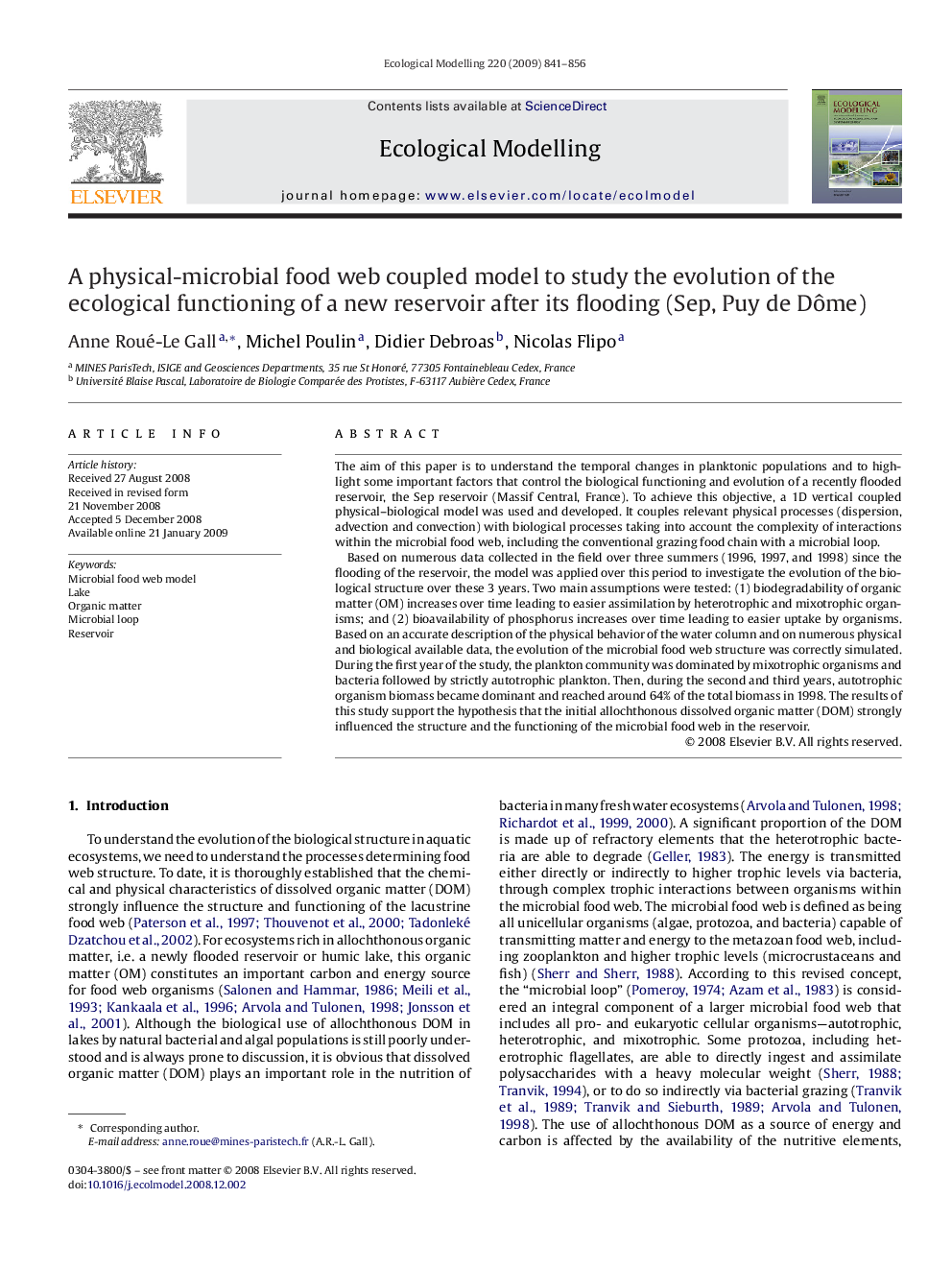| Article ID | Journal | Published Year | Pages | File Type |
|---|---|---|---|---|
| 4377912 | Ecological Modelling | 2009 | 16 Pages |
The aim of this paper is to understand the temporal changes in planktonic populations and to highlight some important factors that control the biological functioning and evolution of a recently flooded reservoir, the Sep reservoir (Massif Central, France). To achieve this objective, a 1D vertical coupled physical–biological model was used and developed. It couples relevant physical processes (dispersion, advection and convection) with biological processes taking into account the complexity of interactions within the microbial food web, including the conventional grazing food chain with a microbial loop.Based on numerous data collected in the field over three summers (1996, 1997, and 1998) since the flooding of the reservoir, the model was applied over this period to investigate the evolution of the biological structure over these 3 years. Two main assumptions were tested: (1) biodegradability of organic matter (OM) increases over time leading to easier assimilation by heterotrophic and mixotrophic organisms; and (2) bioavailability of phosphorus increases over time leading to easier uptake by organisms. Based on an accurate description of the physical behavior of the water column and on numerous physical and biological available data, the evolution of the microbial food web structure was correctly simulated. During the first year of the study, the plankton community was dominated by mixotrophic organisms and bacteria followed by strictly autotrophic plankton. Then, during the second and third years, autotrophic organism biomass became dominant and reached around 64% of the total biomass in 1998. The results of this study support the hypothesis that the initial allochthonous dissolved organic matter (DOM) strongly influenced the structure and the functioning of the microbial food web in the reservoir.
